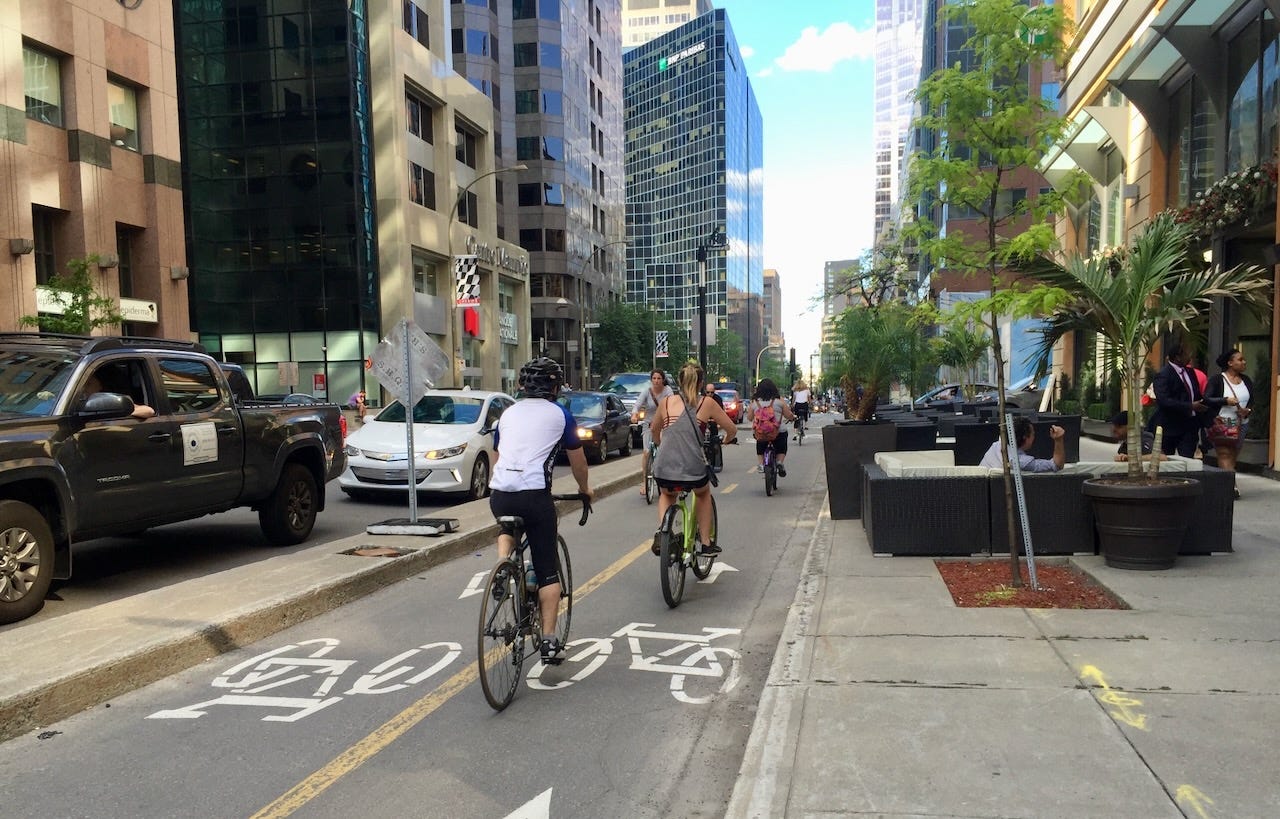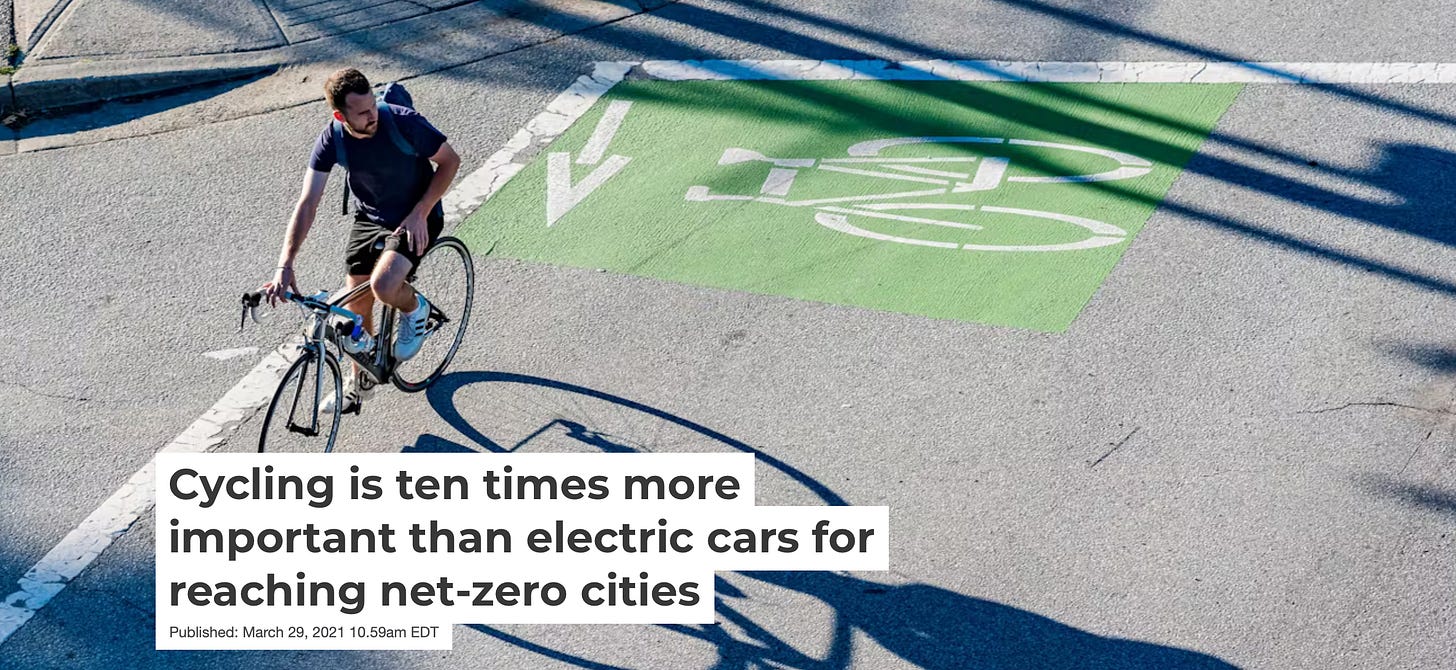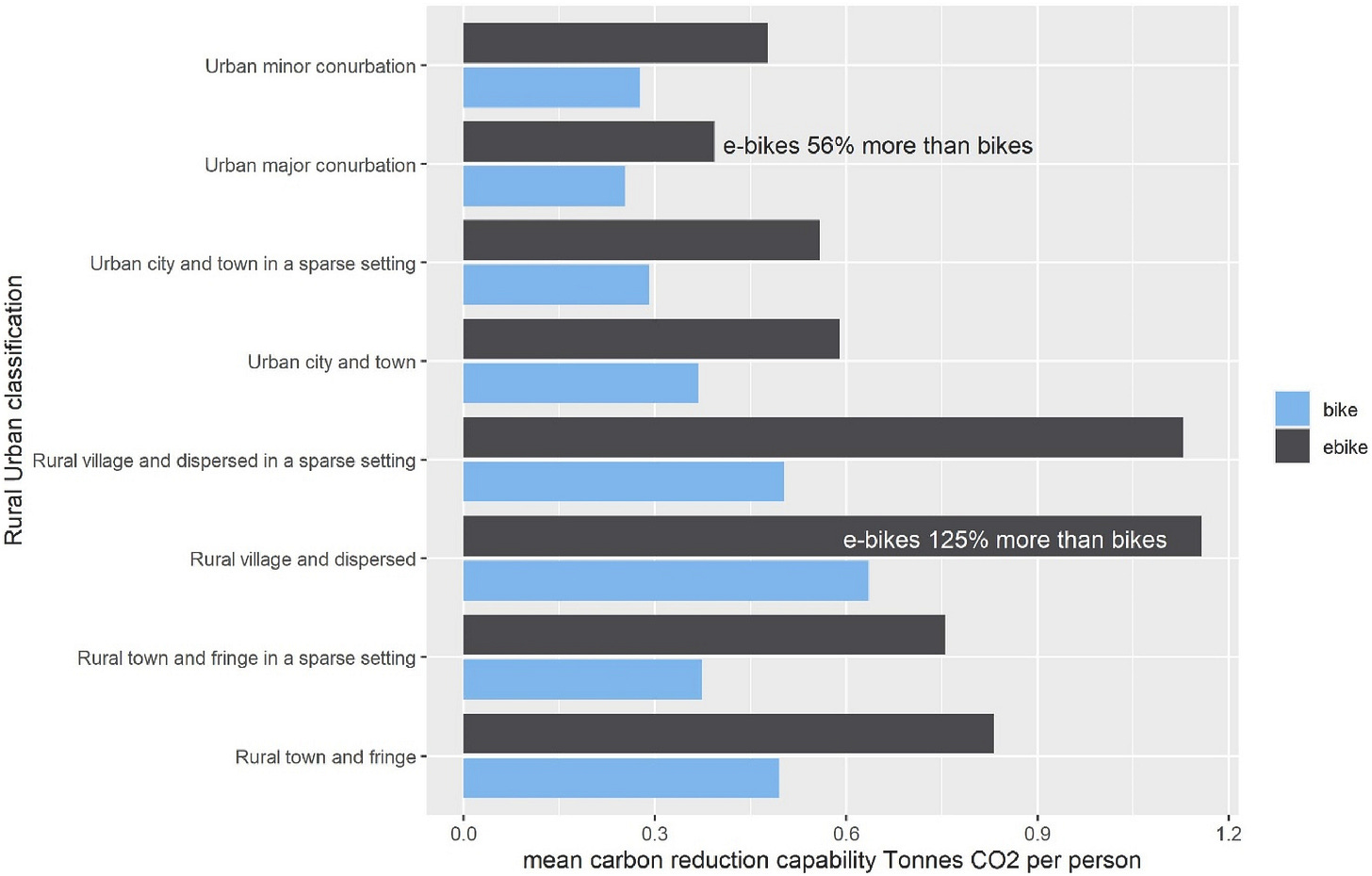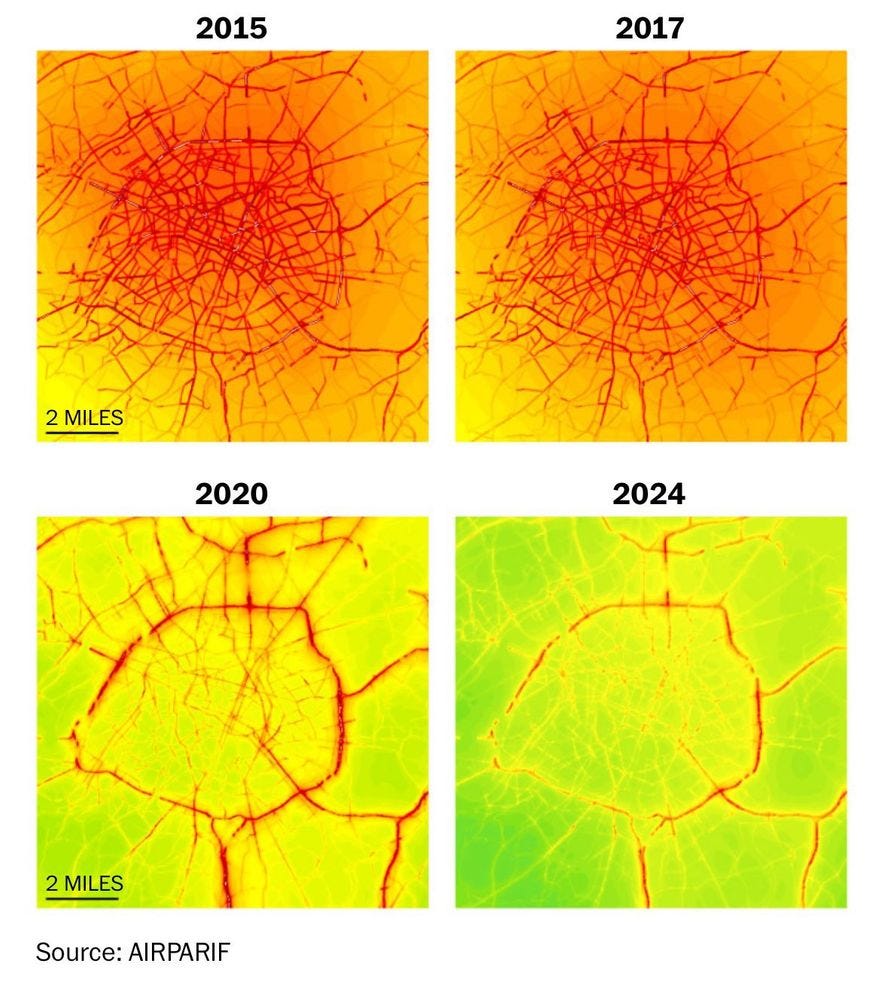Piles of research on why we should promote bike lanes, bikes, e-bikes and e-scooters
Doug Ford take note: they reduce carbon emissions and save lives
I am doing a lecture soon at a seminar, Unleashing the Power of Cycling: A Sustainable Approach to Achieving Toronto’s Net Zero Goals , and have been gathering research to make the case for bikes, e-bikes, and separated bike lanes. Here in Toronto, Premier Doug Ford is planning to rip out bike lanes that he says are slowing traffic, even though he is head of the province, not Mayor of the city. Donald Trump is trying to do the same thing in New York City. (See Bike lanes are under attack across North America) Neither of them care much about carbon emissions, but a strong case can be made that getting people out of cars and on to bikes is one of the fastest, cheapest, and most effective ways to lower carbon emissions. I have been astonished at the volume of research, and thought it would be interesting to look at some of it here.
Christian Brand, Associate Professor in Transport, Energy & Environment, Transport Studies Unit, University of Oxford, is prolific with his research and his articles explaining it, such as this one in The Conversation. Many nations are pushing a switch from ICE powered cars to electric cars as the solution to carbon emissions, but Brand points out that it will take too long and it ignores the upfront carbon emissions from making all those cars.
"The emission savings from replacing all those internal combustion engines with zero-carbon alternatives will not feed in fast enough to make the necessary difference in the time we can spare: the next five years. Tackling the climate and air pollution crises requires curbing all motorised transport, particularly private cars, as quickly as possible. Focusing solely on electric vehicles is slowing down the race to zero emissions."
The study found that people who cycled on a daily basis had 84% lower carbon emissions than those who drove, and even just switching from car to bike one day a week reduced emissions by 3.2kg. He concludes:
“So the race is on. Active travel can contribute to tackling the climate emergency earlier than electric vehicles while also providing affordable, reliable, clean, healthy and congestion-busting transportation.”
In an article written for the University of Oxford, Brand discusses e-bikes, noting that as many as 50% of car trips are less than five km, and could easily be replaced by bikes. E-bikes push the rante to 10km; in the Netherlands and Belgium, e-bikes have become popular for commutes of up to 30km, which seems a bit niche to me. Brand then talks about what keeps people off bikes:
“What deters many people from cycling or e-biking is safety. Accidents rates for cyclists are still considerably higher than, say, for car drivers (although accident rates for motorbikes are even worse). Therefore, an important prerequisite for cycling is the availability of safe cycling infrastructure, including segregated cycling lanes.”
Here is the original research: The climate change mitigation effects of daily active travel in cities. His latest paper looks at how the switch to active transportation reduces air pollution: Health and associated economic benefits of reduced air pollution and increased physical activity from climate change policies in the UK
A study prepared by Fraunhofer Institute, The Net Sustainability Impact of Shared Micromobility in Six Global Cities included a life cycle assessment of different forms of transport and found that the private bike had the lowest full lifecycle emissions, followed closely by e-bikes.
A 2022 study from the Institute for Transportation and Development Policy’s (ITDP) Investment in urban protected bicycle lanes can significantly reduce greenhouse gas (GHG) emissions, lower transport costs, and prevent road fatalities compared to investment in other infrastructure. Ontario’s Doug (or should that be Dug) Ford wants to spend a hundred billion dollars to drill a car tunnel under the city of Toronto, when in fact bike lanes are far more effective.
“The report, Protected Bicycle Lanes Protect the Climate, finds that networks of protected bicycle lanes in middle-income cities are an extremely cost-effective way of reducing emissions; providing quantifiable economic benefits, and paying for themselves in less than a year. These networks create more economic value annually than they cost to build, given the transportation cost savings and the public health benefits of increased exercise. Protected bicycle lane networks outperform all other infrastructure developments, for example, metro rail systems, while an essential part of sustainable urban transportation, are outperformed by a factor of ten in terms of emissions reductions per dollar spent. For every 200 USD spent on highways, the report estimates, one tonne of GHG emissions per year will be created, while the same spend on protected bicycle lanes mitigates almost exactly the same level of GHG emissions.”
The ITDP is at it again with The Path Less Travelled: Scaling Up Active Mobility to Capture Economic and Climate Benefits stressing that the obsession with the car has to end.
“Urban transportation policies, investments, and infrastructure have historically prioritized the movement of vehicles without considering broader economic, environmental, and social impacts. As a growing number of cities experience rapid urbanization, decision makers are increasingly recognizing that in well-functioning cities not everyone can own a vehicle and use it for the majority of their trips. There is simply not enough space to move and store that many vehicles. The impacts on the climate, human health, and economic inclusion would be catastrophic.”
As noted before, the biggest barrier to getting people on bikes is fear, as Lauren Pearson noted in Barriers and enablers of bike riding for transport and recreational purposes in Australia. “The most highly reported barriers to riding a bike for transport included not wanting to ride on the road with motor vehicle traffic (56%), concern about collision with a motor vehicle (54%), bad weather (53%) and motorist aggression (53%).”
The main reason that the Trumps and Fords of this world want to get rid of bike lanes is the concern that they cause more congestion and slow the drivers of cars down. But a study titled The Role of Walking and Cycling in Reducing Congestion found that if the remaining car lanes were properly designed and left turns were managed more carefully, travel times for cars could actually be reduced.
I will end with my favourite study, E-bikes and their capability to reduce car CO2 emissions, Where Ian Philips and his team look at the difference e-bikes make by dramatically increasing the range people are willing to travel.
The study estimated how far individuals are comfortable and capable of going by e-bike and noted that they were particularly useful on the urban fringe where people are now pretty much forced to drive cars, while urban core dwellers have shorter distances and more options. They did statistical analyses to figure out what proportion of the population was fit to ride an e-bike while carrying 33 pounds, which is equivalent to carrying a small child, shopping bags, or day-to-day items. They assumed there was safe infrastructure, and that people were willing to ride about 20 kilometers (12.42 miles).
"Although the CO2 intensity of the car fleet will improve as it moves towards electrification, this is progressing too slowly to avoid the need for parallel reductions in car use and the simulation is an attempt to quantify the scale of carbon reductions if a switch to e-bikes were to happen in the near-term. Mass uptake of e-bikes could make a significant early contribution to transport carbon reduction, particularly in areas where conventional walking and cycling do not fit journey patterns and bus provision is relatively expensive, inflexible and has diminished over recent decades."
Conclusions:
Bikes, e-bikes, and other forms of micromobility have significantly lower carbon footprints than ICE cars or electric cars.
Bike lanes encourage more people to ride longer distances.
Properly designed, bike lanes do not significantly delay drivers.
The e-bike revolution will put more people on bikes and will unlock the suburbs, which are the source of the cars.
Promotion of cycling and micromobility could be the most significant approach to reducing carbon emissions.
I could go on about air pollution and particulate emissions, but these images from Paris tell the story better than I ever could.












I love my e-bike. I am about to pass 20,000 miles of riding since 2017, most of it commuting (80%). I calculate that this has saved about 4 metric tons of emissions, determined using the mileage of my Prius, and that I charge from solar panels. (Going into the embodied carbon of all this would take a book, but it is easy to see that a bike has far less than a car!) Though I recently retired at 70, I still ride to town, which is 8 miles away, in the hilly country of the Shenandoah Valley. I would not do it on a regular bike. Safety is a concern, but in a smaller urban area it is relatively easy to avoid major roads. However, we still make mistakes in design. Most accidents happen around intersections. We mark our bike lanes between intersections and end them before the right turn lanes (if they exist) start. Good planning would start bike infrastructure with intersections, not leave them for last.
Because they are so efficient, biking produces less carbon than walking. This would be from the indirect emissions from agriculture producing the additional calories your body needs for walking or cycling. I have a hard time believing it, but there is even a 2016 report from Europe that claims e-bikes produce less carbon than walking.